Honeywell Thermostat Backlight Not Working? (Fix It Now!)

Honeywell thermostats are some of the most popular and most reliable thermostats on the market today. No matter which model thermostat you chose, you can almost bank on the thermostat working reliably for years. When something like a backlight goes out, it is inevitably a simple matter to diagnose and repair.
A variety of reasons can cause the backlight on a Honeywell thermostat backlight to stop working. Usually, these problems stem from a power problem somewhere in the system. Only rarely does the LED backlight fail and need replacing. Diagnosing a failed backlight takes a little time and some detective work.
There are many styles and models of Honeywell thermostats. It is impossible to provide a step-by-step diagnosis for backlight problems with every model and type of Honeywell thermostat. We can look at the general areas where problems can occur, point to some possible solutions, and provide some advice on remedying the problem.
Do You Need Your Thermostat Repaired or Reprogrammed?
Get free, zero-commitment quotes from pro contractors near you.

Where Do you Start When the Backlight Stops Working?
There are several reasons for a Honeywell thermostat backlight to quit working. Our usual process is to start with the most obvious problem and work our way to the least obvious. With that in mind, let’s try and diagnosis your thermostat backlight problem.
Reset the Thermostat – Back to Square One
The first thing to try and restore the backlight on your Honeywell thermostat is to reset the thermostat. For most Honeywell thermostats, you can perform a factory reset by accessing the menu and selecting the option “Restore Factory Defaults.”
Doing a factory reset will return your Honeywell thermostat to all its original settings, overwriting any custom programming or settings you have entered. You must reprogram your thermostat after a factory reset.
Bottomed Out Batteries
Most Honeywell thermostats with backlights have internal batteries to power the backlight and to maintain the settings memory. Oftentimes, as the batteries reach their life span, the LED backlight will suddenly cease to function. There is usually no dimming to give you any indication that the power from the batteries is starting to fade.
If the backlight on your Honeywell thermostat suddenly fails, the first thing to check is the internal battery of your Honeywell thermostat. The internal battery can vary from model to model. The method of changing the battery also differs. Consult your thermostat user’s manual for directions on changing the battery in your thermostat.
Other Symptoms of a Dead BatteryYour Honeywell thermostat may give you other hints that the internal battery is getting low and need replacing. A low battery can cause the internal settings memories to shift or change randomly. The thermostat may begin to short cycle the heating and cooling unit when the batteries are low. If your HVAC system begins to act erratically, check the batteries in your thermostat first.
Once you Make the ChangeAs part of the battery change process on your Honeywell thermostat, you may need to reprogram the settings. The internal battery is responsible for keeping the memory settings, and once you remove the batteries, you will lose all the settings more than likely.
Power Problems – Finding the Source
Some Honeywell thermostats draw their power from the control board of the HVAC system. Usually, this is 24V of alternating current supplied by a transformer on the control board. Do not be misled. Your Honeywell thermostat doesn’t work with direct current.
Several issues with the power supply and control board can cause the LED backlight of your Honeywell thermostat. In some cases, diagnosing a problem with the power delivery to your Honeywell thermostat may require a service technician. If you are familiar with using a multi-meter, you may make the diagnosis yourself.
Blown FusesIf there is no power coming to the thermostat, the first thing to check is blown fuses on the control board. Most HVAC control boards have internal fuses to protect the electronic systems from overvoltage or spikes.
These fuses are typically automotive-style fuses near the connection to the transformer that provides the 24 volts alternating current to the thermostat. Before you check the fuses, disconnect the HVAC unit from its electrical supply or turn off the circuit breaker.
If you find a blown fuse, replace the fuse with the same size and style fuse. Using a different fuse could damage your HVAC system or cause a fire. When you have replaced the fuse, turn on the power to the HVAC system and check your thermostat.
Loose or improper Wiring
Sometimes, the wires that connect your Honeywell thermostat to the HVAC control board get damaged or loosen at the connections. Start at the thermostat and make sure all wire connections are tight and in the right place. If the thermostat connections are good, check the connections on the control board of the HVAC system.
Even if all the connections are secure and correct, damage may have occurred between the thermostat and the control board. If you own a multi-meter, you can easily check the continuity of each wire to make sure the wires are intact.
Making the FixIf the wiring connecting your thermostat with the control board is damaged, you should install a new thermostat wiring bundle. This installation often requires accessing the attic space and feeding wires through walls. We suggest that most homeowners call an HVAC service technician to do this installation.
Protecting Your HVAC System – Internal Controls
All modern HVAC systems have several internal safety systems that constantly monitor the operation of the system. If an unsafe condition occurs, these safety systems will shut down the system and, in some cases, turn off the power.
There are situations where one of these internal systems will shut down the system so that the power to the thermostat also shuts down. A shutdown of this kind will often cause the LED backlight on your thermostat to go off as well.
The Fix – Time for Some HelpIf a shutdown of this type occurs, it is a symptom of a much larger problem with your HVAC system. Before resetting the system and trying to restart your HVAC system, you should find why the system shut down.
There are so many sensors and safety systems that your best bet is to call a trained service technician to determine the cause of your system shutdown. Restarting a system that has tripped a safety sensor is not a good idea.
Open Service Panel – Dark Thermostat Screen
Many HVAC systems have switches on the service panels. If the service panel is not properly closed and secured, the switch may interrupt the power to the entire HVAC system. This power interruption can cause your thermostat backlight to turn off.
Check the Doors and PanelsMake sure that all the panels and service doors to your HVAC system are properly closed and secured. If you can locate the switch on the service panel, you can manually depress the switch to check if the power to the HVAC system comes on.
If the system power doesn’t come back on when the switch is depressed, the switch is bad or other problems with the system exist. This condition is usually a good indication that a call to your HVAC service technician is in order.
A Bad LED or Faulty Thermostat
If everything else in your system checks out, your Honeywell thermostat may be faulty. This situation may be a bad LED or another fault in the control board of the thermostat. Usually, such a fault in the thermostat is not an economical fix. In most instances, the better decision is to replace the faulty thermostat with a new Honeywell unit.
Consult with your HVAC service technician about which Honeywell thermostat is the best fit for your system and your expectations.
Keeping your Honeywell Thermostat in Top Shape
Like any other appliance, thermostats need some maintenance and care to continue to operate efficiently and effectively. Honeywell suggests the following maintenance regularly.
- If your Honeywell thermostat has an internal battery, change the battery at least once a year.
- Wipe the thermostat housing with a soft, clean cloth. Do not use harsh cleaners. Don’t spray the thermostat with aerosol or liquid cleaners
- If the thermostat operates in a high dust environment, you may occasionally use compressed air to blow dust from the thermostat’s interior. Cans of air used to clean computer equipment is the recommended method.
With proper maintenance and care, your Honeywell thermostat will provide years of reliable service. However, understand that everything wears out, and eventually, even thermostats need replacing.
Do You Need Your Thermostat Repaired or Reprogrammed?
Get free, zero-commitment quotes from pro contractors near you.

When the Lights Go Out
If the backlight on your Honeywell thermostat goes out, it is not necessarily a major problem. Taking the time to diagnose the possible problems is easily done by most homeowners, and the possible fixes are accomplishable by many do-it-yourselfers.
Honeywell thermostats are some of the most reliable and easiest to operate thermostats on the market. If you experience problems with your Honeywell thermostat, consult the troubleshooting guide in the user manual for solutions. Use our hints and tips to troubleshoot your Honeywell thermostat. Good luck with your project.
Related Articles

Dennis is a retired firefighter with an extensive background in construction, home improvement, and remodeling. He worked in the trades part-time while serving as an active firefighter. On his retirement, he started a remodeling and home repair business, which he ran for several years.
More by Dennis Howard



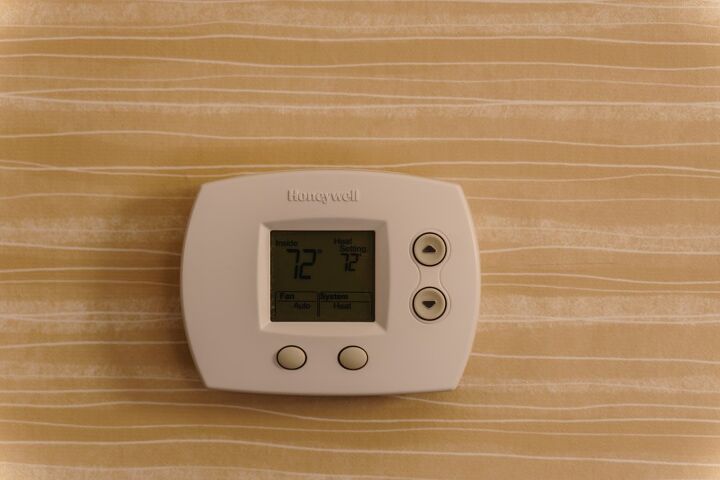






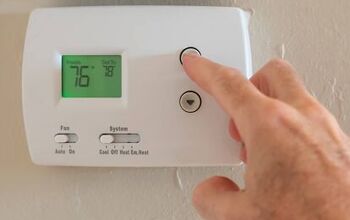
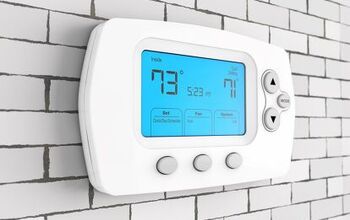
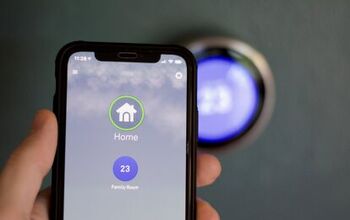
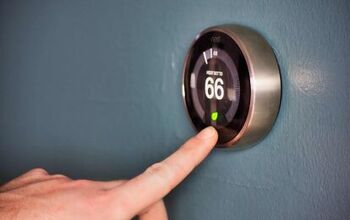
![10 Best Cordless Leaf Blowers – [2022 Reviews & Ultimate Guide]](https://cdn-fastly.upgradedhome.com/media/2023/07/31/9070789/10-best-cordless-leaf-blowers-2022-reviews-ultimate-guide.jpg?size=350x220)











![10 Most Dangerous Neighborhoods in Baltimore [Updated]](https://cdn-fastly.upgradedhome.com/media/2023/07/31/9075655/10-most-dangerous-neighborhoods-in-baltimore-updated.jpg?size=350x220)
